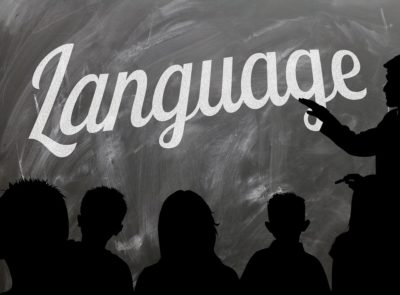 I am passionate about my students and providing them with every opportunity to advance toward a happy and fulfilling future. For most this means graduating from high school and going on to some sort of post-secondary education. One requirement which can be a hurdle for them is world language. Most universities require students to take 2 years of a foreign language. For my students, English is their foreign language, so studying a language on top of English can be daunting. Over the past two years, though, Washington state has introduced the option to show language proficiency through a competency based credit (CBC) exam. This exam can result in the equivalent of two years of language study and can also qualify students for the Seal of Biliteracy. The exam is currently given for hundreds of languages, so many of my students are able to take this exam for their first language and receive credit. This gives students pride in their first languages and a leg up as they move forward in life. This is not, however, the case for our Native American students.
I am passionate about my students and providing them with every opportunity to advance toward a happy and fulfilling future. For most this means graduating from high school and going on to some sort of post-secondary education. One requirement which can be a hurdle for them is world language. Most universities require students to take 2 years of a foreign language. For my students, English is their foreign language, so studying a language on top of English can be daunting. Over the past two years, though, Washington state has introduced the option to show language proficiency through a competency based credit (CBC) exam. This exam can result in the equivalent of two years of language study and can also qualify students for the Seal of Biliteracy. The exam is currently given for hundreds of languages, so many of my students are able to take this exam for their first language and receive credit. This gives students pride in their first languages and a leg up as they move forward in life. This is not, however, the case for our Native American students.
During my recent visit to White Swan High School, a public school on the Yakama Reservation, Jenny Tenney, 2018 Education Service District 105 Regional Teacher of the Year, gave me a tour of her school. As she took me through the halls of the high school, Jenny shared the demographics of the student body, 60% Native, 38% Hispanic, and 2% a smattering of white and other ethnic groups. She also shared the community’s efforts in teaching the tribe’s indigenous language, Sahaptin. The district has the start of a program at the elementary school, through which they teach Sahaptin to the 3rd and 4th graders. There is discussion of moving classes to the high school, but because classes in Sahaptin are not counted for world language credit, students would only receive elective credit. This might limit enrollment.
After this discussion, I wondered if this was the case across the state. As an English language teacher, I understand the value of having literacy in one’s first language, and its impact on learning English. Plus, fluency in one’s native language also increases pride in one’s culture.
Washington state has a large number of Native American tribes, with a wide array of indigenous languages spoken throughout our state. The idea that students would not receive world language credit for learning their native tongue didn’t make sense to me, so I did some digging. What I found was inconsistency.
Right here in Spokane, WA. both Rogers High School and North Central High School offer Salish language classes. Students who take these courses receive world language credit. The teacher, Robert Wynecoop, is highly qualified and fluent in Salish. He explained to me that he teaches “a curriculum similar in nature to what is taught at Salish School of Spokane (…written by the same people). It is similar to what is included in [other] world language curriculums and has the same basic scope and sequence.” Rogers HS currently offers Salish 1 and Salish 2, with a total enrollment of between 35 to 50 students.
Another program is offered at Port Angeles High School in Port Angeles, WA. This program is taught and was created by Jamie Valadez. Valadez teaches Klallam language, a language that was nearly extinguished due to federal policies concerning the schooling of Native children, during the 19th and 20th centuries. Since implementing the Klallam language program, the school has seen dramatic shifts in their Native students. Their grades have improved and they have a sense of pride in their culture. Over 600 students have completed the course since 1999.
At the university level Native American students also struggle to receive world language credit for their indigenous languages. Yale University offers students an opportunity to study indigenous languages, such as Cherokee and Navajo, through their Native American Language Project, but not for credit. While at the University of Washington students are beginning to see progress, as a student recently became one of the first to receive world language credit for showing proficiency in her native language, Quinault.
 Based on my research, it would appear that one major hurdle for Native American students to study and receive credit for their indigenous languages is a lack of qualified and fluent educators to teach the courses and/or to score the exams. Robert Wynecoop and Jamie Valadez are in the minority as highly qualified educators who are also fluent in their respective indigenous languages. However, this is no fault of the individual tribes. For centuries Native Americans have faced the systematic dismantling of their cultures. Throughout the 19th and 20th centuries Native American children were sent to boarding schools in an attempt to force them to assimilate to white culture, in an effort to “kill the Indian in him, and save the man.” Due to these abusive federal policies, many indigenous languages were nearly extinguished. Over the past several decades, however, various tribes are revitalizing their indigenous languages and their cultures.
Based on my research, it would appear that one major hurdle for Native American students to study and receive credit for their indigenous languages is a lack of qualified and fluent educators to teach the courses and/or to score the exams. Robert Wynecoop and Jamie Valadez are in the minority as highly qualified educators who are also fluent in their respective indigenous languages. However, this is no fault of the individual tribes. For centuries Native Americans have faced the systematic dismantling of their cultures. Throughout the 19th and 20th centuries Native American children were sent to boarding schools in an attempt to force them to assimilate to white culture, in an effort to “kill the Indian in him, and save the man.” Due to these abusive federal policies, many indigenous languages were nearly extinguished. Over the past several decades, however, various tribes are revitalizing their indigenous languages and their cultures.
It is clear that providing Native American students with an opportunity to learn, study, and use their indigenous languages leads to positive academic outcomes. Studying their indigenous languages also increases pride in their Native culture and preserves their heritage. As a state we make a concerted effort to meet the language needs of our immigrant and refugee populations. We should be doing the same for our Native American students. Indigenous languages are world languages and deserve to be credited as such.
We have two tribes whose home lies within the boundaries of the North Kitsap School District. One of the tribes, the Suquamish Tribe, now directly operates Chief Kitsap Academy, independent of the North Kitsap School District, under a compact with the state that was signed in August of 2014. Their middle and high school academy was the first tribal-run public school in Washington (there are now more). The Suquamish education department receives state funding directly, instead of through NKSD. Students enrolled in the academy receive a diploma from Chief Kitsap Academy instead of from NKSD.
The superintendent of the Suquamish Tribe’s education department used to be a Suquamish Elementary principal, so we know him well. Teachers at Suquamish Elementary have toured the academy. It’s really nice! At the end of each school year, our fifth graders visit the school they plan to attend next year–Poulsbo Middle School, Kingston Middle School, or Chief Kitsap Academy.
Mandy, I’ll forward your post to both tribal councils and to our curriculum director. But meanwhile I thought you would like to see how the Suquamish Tribe is now exercising rights that had been promised to them by treaty about 150 years ago.
It’s remarkable how we continue to marginalize native populations. Thank you, Mandy, for bringing this issue into the light. This should be a no-brainer. Bilingual kids should be given credit for the achievement.
Hi Mandy,
I recently watched the new movie Indian Horse-a powerful story reflective of the boarding school experience designed to extinguish Native culture in Canada. In one scene, a young boy’s long hair is cut short and I could sense the deep loss of self for the boy in that action alone. In defiance, he regrows it upon leaving the school. The children were forbidden, with severe consequences, to use their language of origin. Within one generation, the flame of their languages almost flickered out. The act of stripping an entire people of their language is not so readily undone, as you have illustrated.
Perhaps with the use technology, such as online classes, these languages can be revived and thrive once again.
Thank you for sharing,
Gretchen
Thank you for bringing this to our attention. Hopefully readers will keep the conversation going and we will see progress in overcoming the damage done by restricting their ability to speak and learn their indigenous language.